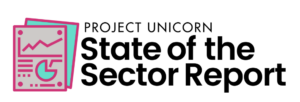How We Increased Teachers’ Data Use Without Data Overload

By Debbie Clark and Stephanie Williamson
As schools administer a battery of tests to determine what students know and don’t know, educators are getting an enormous amount of data meant to inform their instruction. But all of this information can be counterproductive if teachers don’t have an easy way to make sense of it.
In California’s Buena Park School District, where we are Teachers on Special Assignment, the situation is no different. Our district serves nearly 5,000 students in grades K-8, and our teachers give a wide range of universal screening, diagnostic, formative, interim, and summative assessments to students throughout the year.
For instance, students in kindergarten through second grade take the Developmental Reading Assessment (DRA) at the beginning of the school year, so teachers know their reading capabilities. Those who are identified as needing Tier II or Tier III intervention from their previous year’s DIBELS screening also take the Basic Phonics Skills Test III, so teachers can determine appropriate interventions. These students will continue to be tested every two weeks to monitor their progress. Two weeks before the end of each trimester, all K-8 students take common district benchmark assessments. Up to six times each trimester, teachers give formative assessments to check for students’ understanding. And, of course, there are also the end-of-year exams given every April and May.
The problem is not that schools aren’t collecting enough information about student performance. It’s that teachers have too much data. It’s overwhelming for them. They don’t know what data points to focus on—and they don’t have time to be combing through massive amounts of data to figure out what students need.
As a result, the sophisticated data analysis and reporting tools that many school districts have invested in tend to be underutilized. And that was our experience as well.
In our district, teachers use Illuminate Data and Assessment (DnA) to create assessments, and teachers at our middle school administer these tests through their online learning management system, Canvas. Teachers also use DnA to analyze the results of these assessments and make data-informed decisions that we hope will lead to gains in student achievement. But an experience we had during a presentation at a staff meeting showed us that teachers were not using our tools very frequently, if at all. We had teachers bring their laptops so they could log in and follow along during the presentation, and many teachers admitted that they didn’t even know their password.
This troubled us, because we saw enormous potential in using data to improve teaching and learning. But it was also quite revealing. We realized that if we wanted teachers to use data to inform their instruction, we had to simplify the number of reports for them to look at, so they wouldn’t have to sort through an abundance of data to inform their instruction. Once we made this key change, we saw our teachers’ comfort with data take off.
To make evaluating data as easy for teachers to use as we could, we customized the information available for each grade level, making sure reports and resources that will have the greatest impact on student success were accessible.
For instance, a kindergarten teacher can view kindergarten standards, kindergarten readiness reports, DRA results, DIBELS results, and intervention plans. A fifth grade teacher will see links to the fifth grade standards, Interim Assessment Block (IAB) results, EasyCBM results (our Response to Intervention system), and state test results. There are also resources that we push out to teachers at all grade levels, such as attendance, grade books, math pacing guides, and writing rubrics.
We tried to focus on reports, documents, and websites that teachers would be using on a weekly basis. We steered away from resources they would only use once in a while. We wanted these resources to become an invaluable part of the teacher, principal, school psychologist, or counselor’s day—and we have seen that occur.
We have said to our staff: “Tell us what you need from us to make your job easier.” And the excitement we have seen from them in return has been inspiring. Their momentum in using data has grown: Teachers are sharing and discussing their use of reports within grade-level teams, and they know they can ask us to provide resources for anything they need.
We started small this year—helping teachers use data with training wheels on. Next year, we will show teachers how to customize the information available for themselves. When we take these wheels off next year, we will truly be empowering them.
By streamlining the amount of data teachers have at their fingertips and simplifying how we present this information to them, we have made it easier for our teachers to use data to inform their practice. Teachers are accessing the system every day and are using data to inform their instruction, and our proof is that we no longer have teachers asking us: “What’s my password again?”
Debbie Clark and Stephanie Williamson are Teachers on Special Assignment for the Buena Park Elementary School District in Orange County, California.
For more, see:
- Data Interoperability: Applying Playground Principals to EdTech
- 3 Steps to Build Your Own District-Wide Technology Solution
Stay in-the-know with all things EdTech and innovations in learning by signing up to receive the weekly Smart Update.







0 Comments
Leave a Comment
Your email address will not be published. All fields are required.